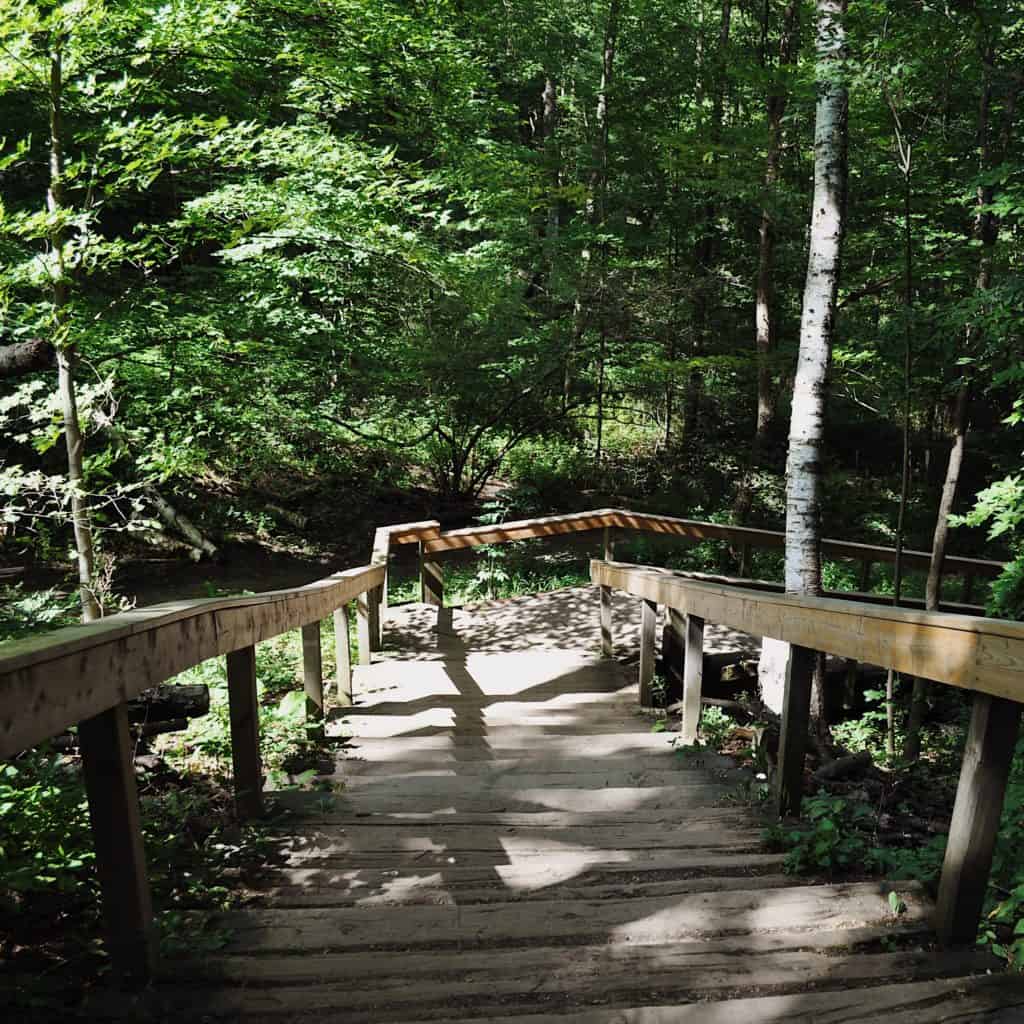Heritage trails help you discover Oakville’s history
Published October 16, 2023 at 4:33 pm

The fall season and long strolls through nature go together like peanut butter and jam, a bat and ball, and even Kermit and Miss Piggy.
Just take a path through a bunch of surrounding trees and take in the colour explosion of their turning leaves on a sunny fall day and you’ll get why they go hand-in-hand.
Walking, jogging or even cycling at this time of year is not only a good way to keep fit, but they also bring a peace of mind and provide a welcome escape from the sounds of the streets and the hustle and bustle of everyday life.
Oakville has almost 60 kilometres of trails that provide insight into the town’s heritage and history.
Open to walkers, joggers and cyclists, Heritage trails feature information stations telling over 80 stories about this land and its people, dating from 9000 BC.
The trails link all areas of the community and reflect our natural, human, and built heritage.
How about a beautiful autumn hike on our trails? There are five trail systems that form Oakville’s heritage pathway network, including Bronte Creek Trail (6.5 km), Joshua’s Creek Trail (6 km), Crosstown Trail (12 km), Waterfront Trail (13 km) and Sixteen Mile Creek Trail (8.5).
In this first of a series into Oakville’s heritage trails, we’ll look at Bronte Creek Trail and its history provided by the Town of Oakville.
The Energy Information Station at Bronte Rd. and the Rebecca St. Bridge describes the influence of various forms of energy, fuel, and power on the development of Oakville over the past two centuries: from water and wood to coal, electricity, oil, and gas.
The Hamilton Radial Railway
In the early 1900s, a system of electrically powered rail cars (trams) connected Hamilton and Oakville through Burlington.
The Cataract Power Company established the Hamilton Radial Railway in 1894 and extended service to the west bank of Sixteen Mile Creek in 1904. When the Radial Bridge was completed in 1906, the line was carried over to a terminal building that still stands at the southeast corner of Randall and Thomas Streets.
The hourly service was popular—the cars were comfortable, and the ride was pleasant. Commuters, excursionists, shoppers, and students attending Appleby College and other schools took advantage.
Originally, the plan was to connect the Oakville end of the line to a line coming out Toronto, but this never happened. In 1924 the service suffered a lack of government funding and came to an end, overtaken by competition from buses and mainline railways.
Bronte refineries
In the 1950s Ontario was building its industrial base and needed secure supplies of oil and gas. Arrangements were made for pipelines to be built connecting western Canadian fuel sources to the Ontario market.
In 1957, Cities Service of Louisiana bought farmland on the west bank of Bronte Creek in Trafalgar Township and built a refinery that processed 20,000 barrels a day of western Canadian crude oil supplied by Inter Provincial Pipeline. The refinery was expanded between 1972 and 1974 to 83,000 barrels per day and was purchased by Petro-Canada in 1983.
The company produces a wide range of products including propane, aviation and motor gasoline, distillates (stove oil, diesel, and furnace oil) and asphalt.
In 1962 Shell Canada built a second refinery next door, which was in production until 1982. It took seven years to de-commission the refinery and clean the land.
The site is now occupied by a residential community, industry, and Shell Park
For more information, see here.
INhalton's Editorial Standards and Policies




